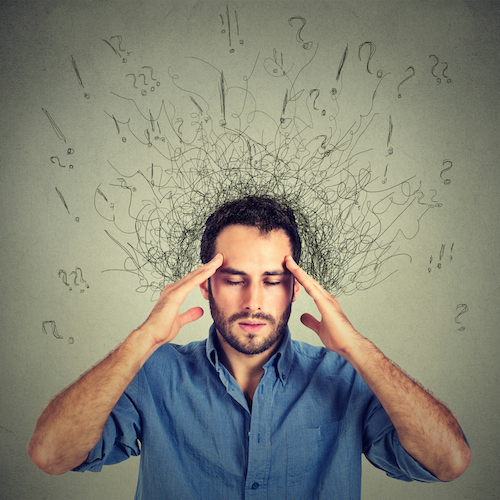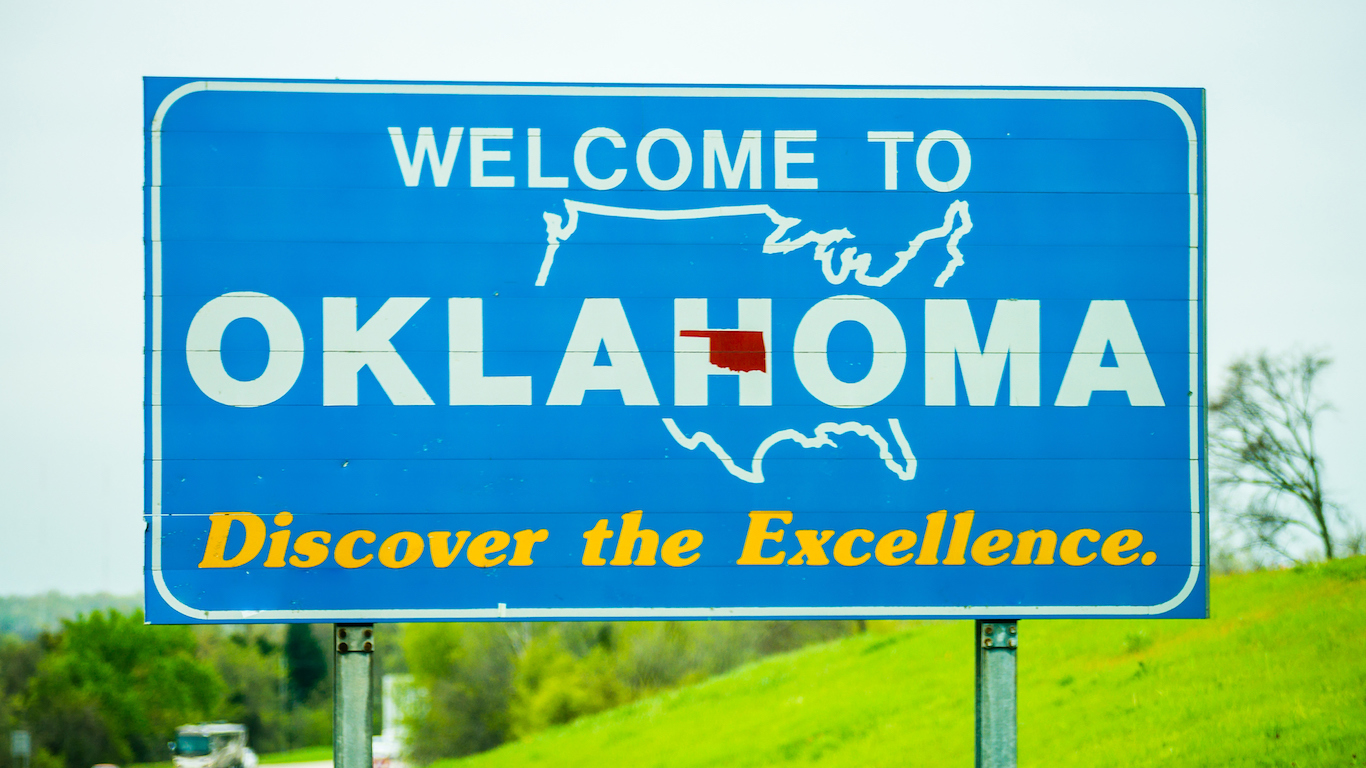Special Report
States Using the Most Mind-Altering Drugs

Published:
Last Updated:

Over the Great Recession, an estimated 7 million Americans lost their homes, 7.6 million lost their jobs, and nearly every American experienced lower economic security. Along with economic hardship and insecurity, Americans’ drug use also increased.
While 18.9% of Americans use mood-altering drugs or medications to help them relax almost every day, a nation-leading 28.2% of West Virginians report near-daily drug use.
[in-text-ad]
The Gallup-Healthways Well-Being Index, which measures a range of metrics to compare the well-being of Americans across the United States, includes a measure of near-daily drug use. Residents of each state were asked how frequently they use drugs that affect their mood or help them relax. Respondents were told to consider prescription medications. Otherwise, mood-altering drug use could be interpreted to include alcohol or nicotine consumption.
Click here to see the states using the most mood-altering drugs.
In an interview with 24/7 Wall St., Dan Witters, research director of the Gallup-Healthways Well-Being Index, highlighted clinical diagnosis of depression and daily physical pain as two of the factors most closely related to regular drug use. Both conditions, while often cited as motivations for substance use, can also be the result of daily drug consumption.
American workers are more likely to experience physical pain or stress in lower-paying jobs, which tend to involve more manual labor or longer working hours. In nine of the 10 states with the largest shares of regular drug users, the median income is less than the national median income of $55,775 a year. Witters claimed that individuals living in poverty were as much as three times as likely to use drugs than those with incomes above the poverty level. In eight of the 10 states with the highest shares of regular drug users, the poverty rate is higher than the 14.7% national rate.
According to Witters, while regular drug use is “for the most part going to be detrimental to your long-term well-being,” the opposite is also true. Nine of the 10 states with the largest shares of drug users, consumption of illegal drugs such as marijuana, heroin, or cocaine is below the national average. On the other hand, faithful adherence to legally prescribed medications alleviates pain and enhances quality of life for thousands of Americans. Such drugs “help manage certain forms of disease burden.”
Nationwide, 12.7 prescriptions are filled for every American each year. In all of the 10 states reporting the highest near-daily drug use, the number of prescriptions filled per capita is above the national average.
To determine the states using the most mind-altering drugs, 24/7 Wall St. reviewed the percentage of state residents reporting near-daily drug use to relax based on interviews conducted between January and December 2015 for the latest Gallup-Healthways Well-Being Index.
We also considered data from the U.S. Census Bureau’s 2015 American Community Survey, including median household income, poverty rate, uninsured rate, and adult educational attainment rates. The 2016 annual state unemployment rate came from the Bureau of Labor Statistics. The 2015 obesity and teen pregnancy rates, as well as the 2014 smoking, inactivity, and diabetes rates, came from the Centers for Disease Control and Prevention. Death rates from heart disease for 2014 and deaths from cancer for 2013 were also from the CDC. The number of annual retail prescription drugs filled per capita are for 2015 and came from the Kaiser Family Foundation. Data on recreational drug consumption and mental illness in the past year came from the Substance Abuse and Mental Health Services Administration’s National Survey on Drug Use and Health, are an average of 2014 and 2015 figures and adjusted for population using data from the ACS. Lastly, the premature mortality rate is from the County Health Rankings & Roadmaps program, a collaboration between the Robert Wood Johnson Foundation and the University of Wisconsin Population Health Institute and is for 2014.
These are the states using the most mind-altering drugs.

10. Oklahoma
> Near-daily drug use: 21.8%
> Median household income: $48,568 (12th lowest)
> Avg. poor mental health days per month: 4.1 (11th highest)
> 2016 unemployment rate: 4.9% (tied — 20th highest)
While an estimated 18.9% of Americans report using mood-altering drugs on an almost daily basis, 21.8% of the Oklahoma population reports such frequent usage. Drug use is often tied to stress, which can be exacerbated by poor health and economic conditions. In Oklahoma, 33.9% of adults are obese and 11.6% have diabetes, among the largest shares nationwide. Also, the median annual household income in the state is just $48,568, and just 84.6% of residents are insured, compared to $55,775 and 88.3% nationwide. With such low income and insurance coverage, Oklahoma residents may be less likely to afford quality, preventive medical care for such poor health conditions.
[in-text-ad]

9. Indiana
> Near-daily drug use: 21.9%
> Median household income: $50,532 (16th lowest)
> Avg. poor mental health days per month: 4.3 (6th highest)
> 2016 unemployment rate: 4.4% (21st lowest)
Survey participants were not told specific drugs to consider in their answers, so substances used by daily drug users could include anything from tobacco to prescription medications. Prescription drug use in Indiana, at 13.4 prescriptions filled per resident annually, while higher than the national average of 12.7 per capita, is lower compared with other states on this list. On the other hand, Indiana is similar to most states on this list in its high adult smoking rate of 23.4%, which is one of the highest in the nation.

8. Ohio
> Near-daily drug use: 22.0%
> Median household income: $51,075 (17th lowest)
> Avg. poor mental health days per month: 4.3 (6th highest)
> 2016 unemployment rate: 4.9% (tied — 20th highest)
Daily drug users are not necessarily abusing their chosen substances. In Ohio, however, the share of the population reporting daily drug use coincides with one of the nation’s worst drug overdose problems. There were 3,310 drug overdose deaths in Ohio in 2015, or 30 for every 100,000 state residents, the second highest number and third highest proportion of all states.
A significant portion of daily drug users are using prescribed medications. For every Ohio resident, 17.5 prescriptions are filled annually, the sixth highest such rate of all states. By contrast, 12.7 prescriptions are filled per capita nationwide on average.

7. Louisiana
> Near-daily drug use: 22.2%
> Median household income: $45,727 (7th lowest)
> Avg. poor mental health days per month: 4.0 (14th highest)
> 2016 unemployment rate: 6.1% (3rd highest)
As is the case in most states with high reported near-daily drug use, Louisianans struggle with weak socioeconomic factors, unhealthy behaviors, and poor health outcomes. Nearly 20% of state residents live in poverty, the third highest poverty rate nationwide. According to Witters, low-income individuals are more likely than wealthier people to report regular drug use, possibly to help cope with challenges related to financial stress. Financial insecurity also raises the likelihood of poor health outcomes, including conditions linked to higher drug use. Louisiana’s obesity rate of 36.2% is the highest of all states, and the incidence of cancer, at 476.3 diagnoses per 100,000 residents, is eighth highest.
[in-text-ad]

6. South Carolina
> Near-daily drug use: 22.5%
> Median household income: $47,238 (8th lowest)
> Avg. poor mental health days per month: 4.2 (9th highest)
> 2016 unemployment rate: 4.8% (25th highest)
Drug use is often more common in low income communities and occurs alongside other unhealthy behaviors. In South Carolina, the typical household earns just $47,238 a year, far less than the $55,775 median income nationwide. An estimated 22.3% of South Carolina adults smoke, and 31.7% are obese, among the highest such shares of any U.S. state. While in most states with large shares of drug users adult residents also tend to exhibit poor signs of mental health, relatively few South Carolina adults report having serious mental illness or suicidal thoughts in the past year.

5. Alabama
> Near-daily drug use: 23.1%
> Median household income: $44,765 (4th lowest)
> Avg. poor mental health days per month: 4.7 (2nd highest)
> 2016 unemployment rate: 6.0% (tied — 4th highest)
Drug use is tied to stress, and stress is often caused by poor economic conditions. Alabama was one of the states hit worst by the Great Recession, during which many residents experienced financial distress. An estimated 6.0% of the Alabama workforce is unemployed, one of the highest unemployment rates in the country and far higher than the state’s pre-recession jobless rate of 4.0% in 2006. Many Alabama drug users are likely taking prescription drugs. The average state resident fills close to 18 prescriptions annually, roughly five more per capita than the national average.

4. Rhode Island
> Near-daily drug use: 23.5%
> Median household income: $58,073 (19th highest)
> Avg. poor mental health days per month: 3.7 (20th highest)
> 2016 unemployment rate: 5.3% (13th highest)
An estimated 23.5% of Rhode Island residents use mood-altering drugs almost every day, the largest share of any state in the Northeast and the fourth largest share of any state nationwide. Unlike other states with large shares of drug users, Rhode Island residents report relatively high incomes. With the typical household earning $58,073 annually, Rhode Island is the only state on this list with a median income greater than the national median of $55,775. Rhode Island is also unique among states on this list in that its residents fill a relatively small amount of prescription drugs and use a relatively large amount of recreational drugs. In the past year, 62.8% of Rhode island adults have consumed alcohol, 18.9% used marijuana, and 2.6% used cocaine, each among the largest shares nationwide.

3. Kentucky
> Near-daily drug use: 24.0%
> Median household income: $45,215 (5th lowest)
> Avg. poor mental health days per month: 4.6 (4th highest)
> 2016 unemployment rate: 5.0% (18th highest)
Nearly one in four Kentucky residents use mood-altering drugs on an almost daily basis, the third largest share of any states. The state’s tobacco use is also very high. About 36.1% of adult residents smoke, far more than the 26.4% national figure. Some state residents may have included tobacco in their answer regarding drug use. Kentucky residents also fill more prescriptions than any other state. The average resident fills 22 prescriptions annually, roughly nine more per capita than the national figure. The high drug use is likely related to the higher likelihood of economic stress in the state. The typical household in Kentucky earns just $45,215 a year, more than $10,000 less than the $55,775 national median income.
[in-text-ad]

2. Arkansas
> Near-daily drug use: 24.9%
> Median household income: $41,995 (2nd lowest)
> Avg. poor mental health days per month: 4.4 (5th highest)
> 2016 unemployment rate: 4.0% (15th lowest)
Drug use tends to occur alongside other unhealthy behaviors, and Arkansas is one of the least healthy states in the country. Nearly 26% of the state’s adult population smokes, 35% are obese, and 12% have diabetes, each among the highest shares of any state. Unhealthy behaviors have contributed to some of the worst health outcomes nationwide. For every 100,000 residents in the state, 190 die of cancer, the fourth highest cancer death rate in the country. Similarly, 374 residents out of every 100,000 die of heart disease, well above the national average rate. Overall, 446 per 100,000 Arkansas residents die before the age of 75, one of the highest premature mortality rates of any state.

1. West Virginia
> Near-daily drug use: 28.2%
> Median household income: $42,019 (3rd lowest)
> Avg. poor mental health days per month: 4.7 (2nd highest)
> 2016 unemployment rate: 6.0% (tied — fourth highest)
West Virginians are — by a wide margin — more likely than residents of any other state to report near-daily drug use. Economic insecurity can lead to higher drug use rates as drugs are often used to cope with financial stress. Poor economic conditions likely contribute to the drug use pattern in the state. West Virginia’s unemployment rate of 6.0% is tied with Alabama as the fourth highest of all states. Also, the median household income of $42,019 a year is third lowest in the nation. Mood-altering drugs are also often used to help cope with depression. The average state resident reports 4.7 poor mental health days in a month, the second highest estimated level of poor mental health.
Survey participants were told to count prescription medications. The high number of prescriptions filled in West Virginia, at 21.8 per person annually, is second highest of all states and likely contributes to the nation-leading daily drug use levels.
The last few years made people forget how much banks and CD’s can pay. Meanwhile, interest rates have spiked and many can afford to pay you much more, but most are keeping yields low and hoping you won’t notice.
But there is good news. To win qualified customers, some accounts are paying almost 10x the national average! That’s an incredible way to keep your money safe and earn more at the same time. Our top pick for high yield savings accounts includes other benefits as well. You can earn up to 3.80% with a Checking & Savings Account today Sign up and get up to $300 with direct deposit. No account fees. FDIC Insured.
Click here to see how much more you could be earning on your savings today. It takes just a few minutes to open an account to make your money work for you.
Thank you for reading! Have some feedback for us?
Contact the 24/7 Wall St. editorial team.